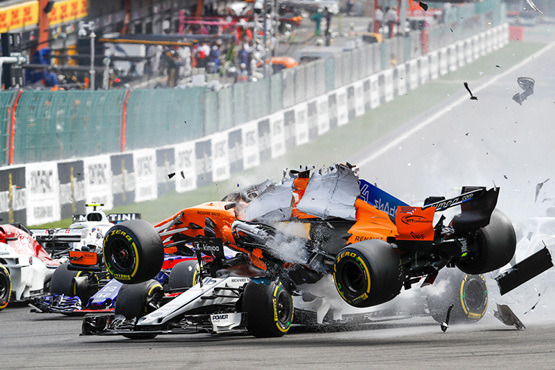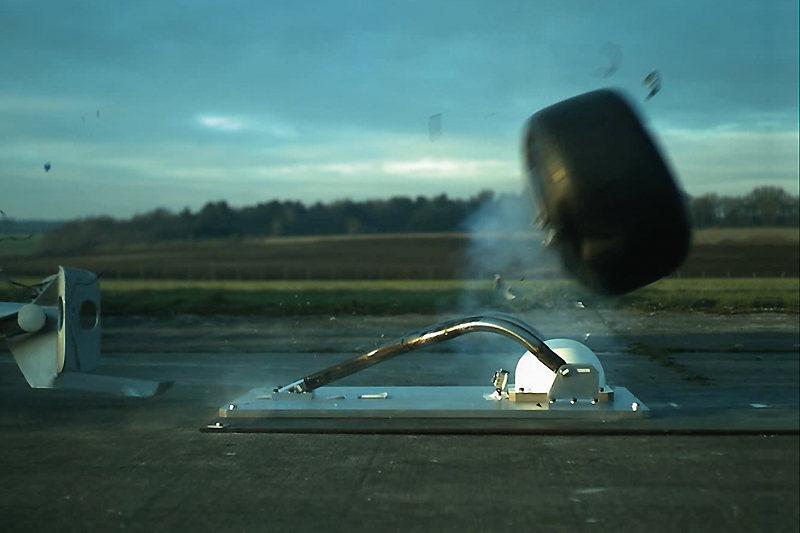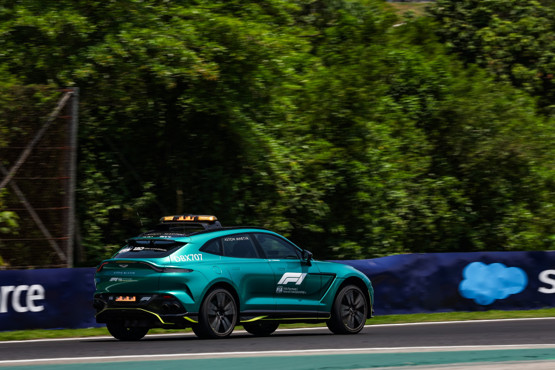Halo: guardian angel of the race track

The Halo, introduced by the FIA and designed by researchers at the Global Institute for Motor Sport Safety, with funding support from the FIA Foundation, was initially designed as a device to provide additional frontal protection from flying objects for open cockpit racing drivers.
Development of the Halo took place between 2016 and 2017, with the first finished design being implemented on Formula 1 cars from the beginning of the 2018 season.
Following scepticism from teams and drivers, the research phase looked at alternative safety devices including an 'aeroscreen' developed by Red Bull Advanced Technologies and the FIA's own 'Shield' design - both of which were discounted for various reasons.

Despite initial misgivings the Halo proved its worth on several occasions during its debut season. One of the first beneficiaries, F2 driver Tadasuke Makino, credited the Halo with saving his life. During the Barcelona round of the 2018 FIA Formula 2 Championship, a collision between Makino and Nirei Fukuzumi caused by an aggressive overtake on a corner could have had tragic consequences. At speeds of over 250km/h, the cars collided and Fukuzumi’s car was spun, which resulted in the car driving over Makino’s cockpit. Tyres marks on the Halo showed extensive contact was made, but that Makino’s head was shielded. The Global Institute report for the FIA Safety Department concluded that the Halo “likely prevented contact between the tyre and the drivers head,” going on to add “without the Halo there would have been potential for a very serious head or neck injury.”
What has been particularly satisfying for the FIA design team is that while the Halo project was instigated to provide additional protection from flying objects, such as stray tyres, it has also proved protective in other circumstances, in this case car launching. Senior Research Engineer Andy Mellor said: “The Halo was originally conceived as additional frontal protection and the design brief was to manage the energy of an impacting wheel assembly. However, when we conducted the detailed risk assessment, we determined that the Halo could offer significant protection during a much wider scope of accident types, and the accident at Barcelona was anticipated during the risk assessment study.”
The Halo device was called into action again at the Belgian Grand Prix in August 2018. A few seconds after the start of the race, Nico Hulkenberg slammed into Fernando Alonso’s McLaren at the La Source hairpin. The collision launched Alonso into the air with his car landing on top of Charles Leclerc’s Sauber. Fortunately, Alonso’s car did not touch Leclerc’s helmet and it seems as if the Halo helped to deflect it away from the driver. What is certain is that Alonso’s front-right wheel struck Leclerc’s Halo as it passed over the car, breaking the McLaren’s suspension.
Leclerc confirmed the worth of the device saying, “Definitely the Halo probably helped today,” while Alonso added: “The positive side is we are all OK, especially Charles. I flew over his car and the Halo was a good thing to have today.”
Former F1 champion Nico Rosberg added his voice to the new system, tweeting: “We can end the Halo discussion now. It will save lives! #thanksFIA.”
This technology is all part of the FIA’s safety focused work across motor sport - the FIA with the support of the FIA Foundation is determined to ensure that safety always comes first.



